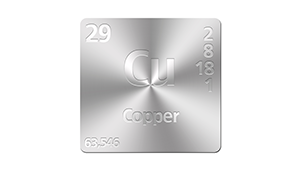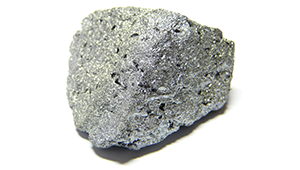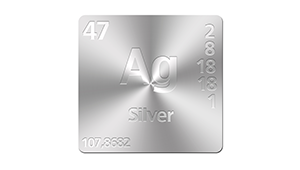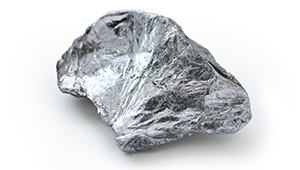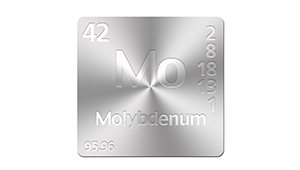
Mining produces raw materials for things you use every day. The U.S. economy and national security is reliant on strategic and critical minerals. According to the 2017 USGS Mineral Commodities Summary, imports made up more than one-half of the U.S. consumption of 50 nonfuel mineral commodities in 2016. Additionally, the United States was 100 percent import reliant for 20 nonfuel mineral commodities and 50 percent import reliant for an additional 30 minerals.
The CuMo Project could become a sustainable, domestic source of molybdenum, copper, silver, tungsten and rhenium which could reduce mineral import dependency and avoid harmful supply chain disruptions.
Applications for the minerals contained in the CuMo deposit, include:
- Molybdenum–bridge and building construction, especially where pollution/salt/volcanic exposure are factors; pipelines for petrol and drinking water delivery; manufacturing automobiles/ships/rockets/aircraft; lubrication for high heat purposes; agricultural fertilizer to boost crop production; fuel cell technology; mobile phones; jet engines; wind turbines and computers
- Copper–Electrical wire, coins, medical equipment, medicine, plumbing, roofing, solar panels, alloys (brass, bronze, pewter)
- Silver–Mirrors, silverware, jewelry, electrical wires, coins, dental work, specialty fabrics, batteries, solar panels, X-Rays, high-tech devices.
- Tungsten–arc-welding electrodes, heating elements in high-temperature furnaces, equipment for metal working/mining/petroleum industries, drilling tools, dental drills, fluorescent lighting
- Rhenium–a catalyst in the production of lead-free/high octane gasoline, jet engines, filaments for mass spectrographs/X-Ray machines/ovens, an electrical contact material
3 / 6
Metals
Cu
Copper is a chemical element with the symbol Cu (from Latin: cuprum) and atomic number 29. It is a ductile metal with very high thermal and electrical conductivity. Pure copper is soft and malleable; a freshly exposed surface has a reddish-orange color. It is used as a conductor of heat and electricity, a building material, and a constituent of various metal alloys.
Silver
Silver is a precious metal, and is used as an investment, to make ornaments, jewelry, high-value tableware, utensils and currency coins. Today, silver metal is also used in electrical contacts and conductors, in mirrors and in catalysis of chemical reactions.
Ag
Silver is a metallic chemical element with the chemical symbol Ag and atomic number 47. A soft, white, lustrous transition metal, it possesses the highest electrical conductivity of any element and the highest thermal conductivity of any metal. The metal occurs naturally in its pure, free form (native silver), as an alloy with gold and other metals.
Molybdenum
Molybdenum does not occur naturally as a free metal on Earth, but rather in various oxidation states in minerals. The free element, which is a silvery metal with a gray cast, has the sixth-highest melting point of any element. It readily forms hard, stable carbides in alloys, and for this reason most of world production of the element (about 80%) is in making many types of steel alloys, including high strength alloys and superalloys.
Mo
Molybdenum is a Group 6 chemical element with the symbol Mo and atomic number 42. The name is from Neo-Latin Molybdaenum, from Ancient Greek Μόλυβδος molybdos, meaning lead, since its ores were confused with lead ores.[4] Molybdenum minerals have been known into prehistory, but the element was discovered in 1778 by Carl Wilhelm Scheele.
Copper
Copper and its alloys have been used for thousands of years. In the Roman era, copper was principally mined on Cyprus, hence the origin of the name of the metal as сyprium (metal of Cyprus). Its compounds are commonly encountered as copper(II) salts, which often impart blue or green colors to minerals such as azurite and turquoise and have been widely used historically as pigments.
Cu
Copper is a chemical element with the symbol Cu (from Latin: cuprum) and atomic number 29. It is a ductile metal with very high thermal and electrical conductivity. Pure copper is soft and malleable; a freshly exposed surface has a reddish-orange color. It is used as a conductor of heat and electricity, a building material, and a constituent of various metal alloys.
Silver
Silver is a precious metal, and is used as an investment, to make ornaments, jewelry, high-value tableware, utensils and currency coins. Today, silver metal is also used in electrical contacts and conductors, in mirrors and in catalysis of chemical reactions.
Ag
Silver is a metallic chemical element with the chemical symbol Ag and atomic number 47. A soft, white, lustrous transition metal, it possesses the highest electrical conductivity of any element and the highest thermal conductivity of any metal. The metal occurs naturally in its pure, free form (native silver), as an alloy with gold and other metals.
Molybdenum
Molybdenum does not occur naturally as a free metal on Earth, but rather in various oxidation states in minerals. The free element, which is a silvery metal with a gray cast, has the sixth-highest melting point of any element. It readily forms hard, stable carbides in alloys, and for this reason most of world production of the element (about 80%) is in making many types of steel alloys, including high strength alloys and superalloys.
Mo
Molybdenum is a Group 6 chemical element with the symbol Mo and atomic number 42. The name is from Neo-Latin Molybdaenum, from Ancient Greek Μόλυβδος molybdos, meaning lead, since its ores were confused with lead ores.[4] Molybdenum minerals have been known into prehistory, but the element was discovered in 1778 by Carl Wilhelm Scheele.
Copper
Copper and its alloys have been used for thousands of years. In the Roman era, copper was principally mined on Cyprus, hence the origin of the name of the metal as сyprium (metal of Cyprus). Its compounds are commonly encountered as copper(II) salts, which often impart blue or green colors to minerals such as azurite and turquoise and have been widely used historically as pigments.


